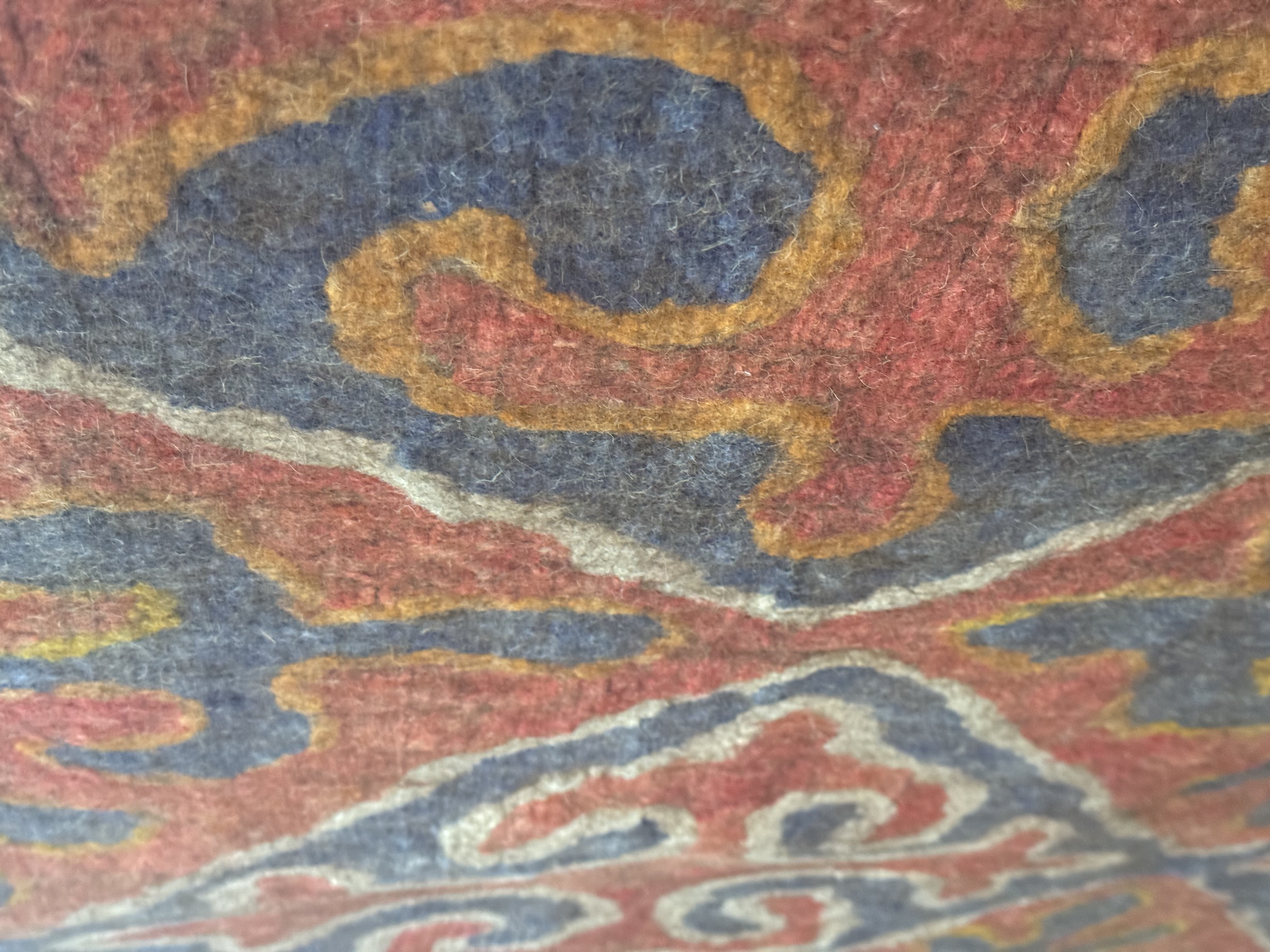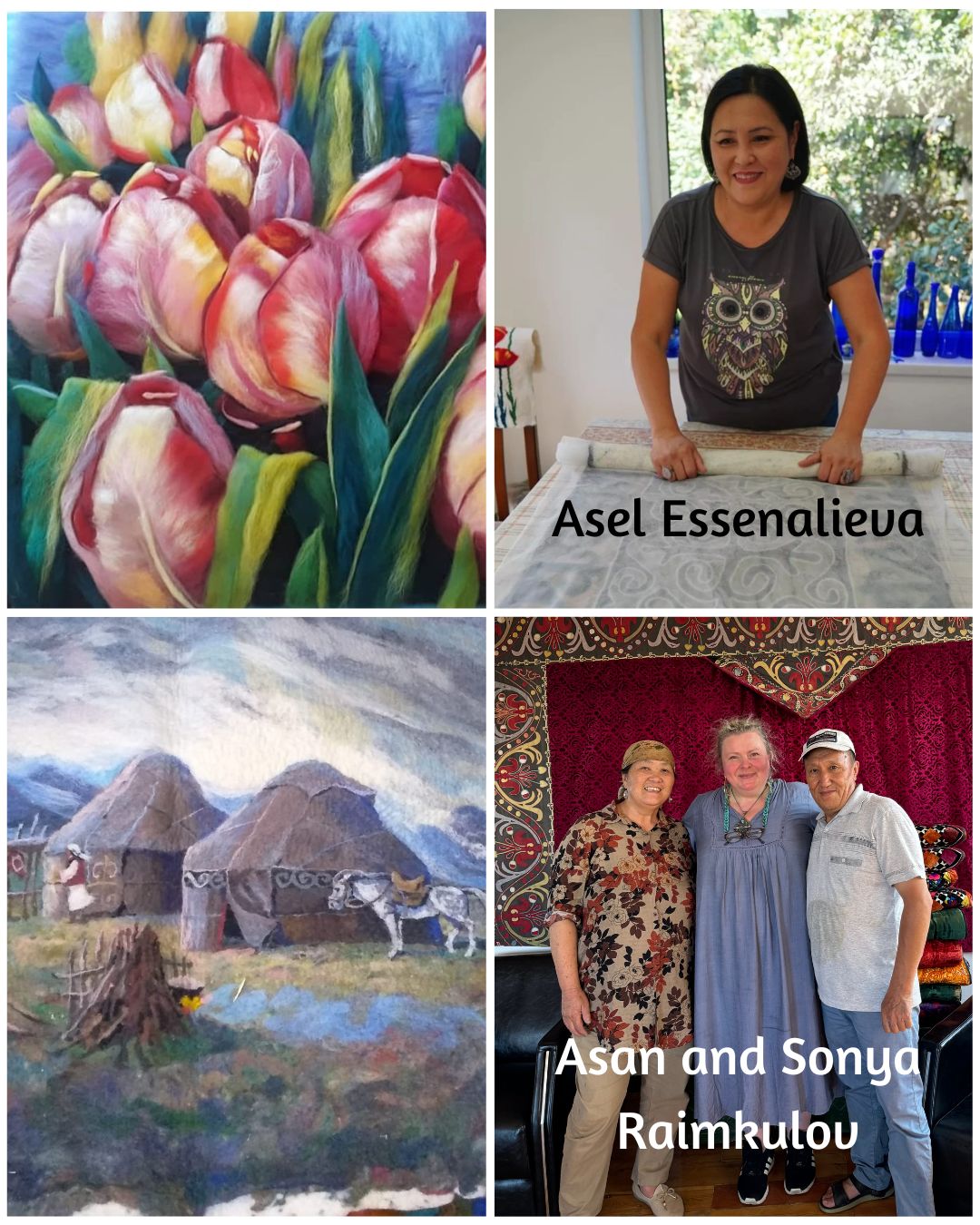- Mar 24, 2025
Ala Kiyiz – The Art of Storytelling in Felt
- Nadja Rein
- Blog
- 0 comments

Feltmaking is more than just a craft—it’s a living tradition, a connection to the past, and a canvas for storytelling. One of the oldest techniques in Central Asian feltmaking is Ala Kiyiz, a method used to create beautiful decorative rugs for yurts, the traditional homes of nomadic people. These rugs weren’t just practical; they carried meaning, history, and artistic pride.
The Traditional Process
Creating Ala Kiuiz begins with freshly beaten and fluffed sheep’s wool, which is carefully laid onto a mother felt or a woven chia mat. Then, skilled hands arrange patterns—often symbolic stories—on top of the main background colour.
Once the design is set, warm water is sprinkled over the wool. In the past, artisans used whatever was available—sometimes handfuls of water, later chia broomsticks, and watering cans. Then the real work began.
To felt the wool, everything was rolled up tightly and secured. Depending on the region, there were two common methods to create friction:
1. The communal method – Groups of people worked together, rolling the bundle back and forth in rhythm, a little bit like a tug-of-war game, bit with more ropes and lesser people on each end (usually one on each end).
2. The horse method – The roll was attached to a horse, which dragged it like a plough, pressing and rolling the fibres together over hours of movement.
One of the greatest challenges was keeping the intricate pattern in place throughout this vigorous process. Skilled artisans took immense pride in ensuring their designs remained sharp, despite the intense rolling.
Compared to Shyrdak, which involves cutting and sewing felt pieces together, Ala Kiyiz was faster to make, making it ideal for high-traffic areas like the yurt entrance. But its beauty was never compromised—its soft, organic edges and unique patterns made every piece a work of art.
Ala Kiuiz in Modern Wool Painting

Today, many fibre artists draw inspiration from Ala Kiyiz in their work, using a technique known as wool painting. On our Felt and Culture Tour, we explore two distinct approaches to this ancient method:
• Asel Essenalieva teaches us to paint with wool, blending colours to create soft, flowing floral designs. Unlike traditional Ala Kiyiz, she allows the edges to remain loose, adding an ethereal quality to her work.
• Asan and Sonya Raimkulov, a husband-and-wife duo, take a different approach, focusing on detailed landscapes with intricate colour layering. Their work transforms Ala Kiyiz into fine art.
Returning to the Roots
While modern adaptations are exciting, there’s something deeply rewarding about going back to the basics. Challenging yourself to recreate Ala Kiyiz as it was done centuries ago—laying wool by hand, rolling it with simple tools, and working without shortcuts—can add new depth to your felting practice. Every exercise builds skill, patience, and understanding of the material.
I’d love to hear from you—have you ever worked with Ala Kiyiz techniques or wool painting? What do you love about them?
Happy felting,
Nadia